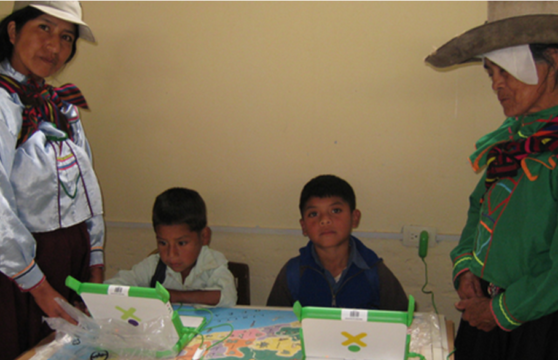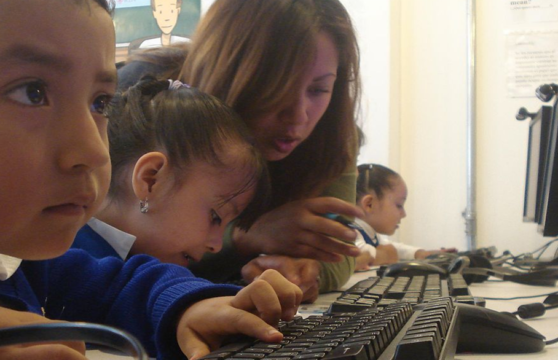
To Guide or Not To Guide Technology Use
Have investments in technology for Latin American public schools produced the expected results on student learning?
A vibrant independent wireless tower industry is a potential pillar for a Latin America 4.0, in order to make the region more productive, more inclusive and more sustainable, socially and environmentally.
Tower deployment, a key part of the basic connectivity infrastructure that sustains the digital economy, has been growing steadily. As of 2022, in the 12 largest Latin American countries, the number of wireless towers, the ‘steel and grass’ of the telecommunication ecosystem, surpassed 191,000.
In parallel with the growth in the installed base of towers, the sector has been evolving toward an increased share of independent players and mobile network operator (MNO)-owned companies. When compared to other regions, Latin America is a fairly developed independent tower company market, only behind South Asia. Going country by county, these companies display higher shares in Guatemala and Brazil, lower shares in Colombia and Argentina, and balanced representation in Ecuador, El Salvador and Nicaragua.
MNOs’ gradual divestiture of most of their tower infrastructure and the combined development of MNO-owned and independent tower companies in Latin America raise the question of the impact of tower ownership on future industry development: is the share of independent tower “specialists” associated with better telecommunication industry performance, as measured by capital efficiency, network deployment, service adoption and quality?
The rationale for infrastructure sharing is quite straightforward. As Strusani and Houngbonon (2020) put it, sharing telecom infrastructure can accelerate digital connectivity by reducing costs and operating expenses, while it also favors consumers by increasing competition, lowering prices and raising service quality. GSMA (2012) has added there is a regulatory interest in infrastructure sharing based on environmental aspects. Empirically, as shown in Osmotherly (2019), the average tenancy ratio of an MNO-owned tower is almost 1 worldwide. By contrast, the average tenancy ratio of towerco owned and operated towers worldwide is almost exactly 2.0. Additionally, evidence from Europe (EY-Parthenon and European Wireless Infrastructure Association EWIA, 2022) shows that a typical location of a wireless network operator (also point of presence) managed by a towerco is about 40 percent more efficient than one managed by an MNO, resulting in economic savings. This consensus contrasts with quite thin academic literature on the actual impact of these industry developments on the wireless market. The only paper we are aware of that specifically addresses the impact of independent tower deployments on connectivity is Houngbonon et al (2021), from the World Bank’s International Finance Corporation (IFC), who analysed 56 towerco markets, checking the correlation between the market success of the towerco business and the development of mobile connectivity markets. In those markets where the penetration of the towerco business model is deeper (namely a market share over 50 percent versus countries with a market share lower than 5 percent), 4G population coverage is 10 percentage points higher; median download speed is 2.2 Mbps higher; the price of mobile internet, in percentage of monthly income, is 1 percentage point lower; and markets are 13 percent less concentrated.
In a recent Telecom Advisory Services paper commissioned by SBA, we confirm the positive role of independent towercos for the digital economy for the 12 main Latin American markets (Argentina, Brazil, Chile, Colombia, Costa Rica, Ecuador, El Salvador, Guatemala, Mexico, Nicaragua, Panama and Peru) from 2000 to 2022, using a unique TowerXchange database, as well as usual economic data from the World Bank and International Monetary Fund.
Our research shows that Latin American countries with a larger independent tower industry—Brazil, Chile, Costa Rica and Panama—measured by its market share and its tower deployment exhibit better wireless performance metrics than the rest (even better than those obtained by the IFC paper). From a correlational standpoint, Latin American countries with a larger independent tower industry (measured by its market share and its tower deployment over population) are associated with:
We went a step further and tested how econometrically solid these positive correlations are. Our research confirms the causality between independent tower companies and better wireless industry development for the aforementioned 12 Latin American countries between 2010 and 2022 in all its relevant dimensions: coverage, adoption, speed, affordability and competition.
An increase in the number of independent towers by 10 percent in a Latin American country leads to, at least, an increase in 4G coverage levels of 1 percent. It is also causally linked to an increase in wireless broadband adoption levels of 0.5 percent, an increase in service quality levels (measured as mobile broadband download speed) of 2 percent; higher mobile market competition (measured as a decrease in the Herfindahl Hirschman Index that measures industry concentration-a lower index depicts more intense competition) of 0.5 percent; improvement in the level of mobile affordability (measured as a decrease in service price relative to the monthly GDP per capita) of 3 percent. This more intense competition drives down prices, which in turn increases affordability.
Given this robust evidence, it would be important for Latin American countries—governments and regulators—to support the development of the independent tower industry, considering at the same time its close interdependence with the wireless market.
Our paper identifies global good practices in the United States, United Kingdom and South Korea which suggest some policy recommendations and principles: stability, predictability and harmonized rules (to support long term investment); flexible (no licenses) deployment regulation; sharing, minimum distance and quality requirements (avoiding over deployment, which is bad for economic sustainability and for the environment); specific 5G and internet-of-things plans; and rural-specific initiatives to close the digital divide.
While some Latin American countries have already adopted most of these prescriptions, some currently lag. Chile shows many good practices, such as national/local harmonization of regulations, clear rules (parameters and tables) for fees and light regulation. Peru and Panama join Chile on light regulatory processes for deployment and operation of passive infrastructure. Costa Rica joins Chile on transparency and institutionalization of fees, and with Brazil and Colombia on plans focused on the development of passive infrastructure for new technologies such as 5G. In addition, Peru and Panama have already defined regulations for the deployment of microcells (low power stations) or urban attachments.
The sector itself must also go beyond its traditional ‘grass and steel’ model by going both green and digital. In doing so, it can play a relevant role toward a more environmentally sustainable Latin America, investing in data-driven services in the 5G era, fostering internet-of-things applications and building smart cities.
In summary, the development of an economically vibrant, environmentally sustainable independent tower industry is critical for improving Latin American wireless telecommunications. Regulators, policymakers and the industry should work together and materialize this opportunity.
Raul Katz is President of Telecom Advisory Services and Director of Business Strategy Research at the
Columbia Institute for Tele-Information at Columbia Business School (New York) and Visiting Professor at the Telecommunications Management Graduate Program at the University of San Andres (Argentina)
Angel Melguizo is Non-Resident Senior Fellow with the Inter-American Dialogue, principal economist at Telecom Advisory Services, and founding partner at Argia green, tech and economics consulting
The opinions expressed in this post are those of the authors. They do not purport to reflect the opinions or views of the Inter-American Dialogue or the Latin America Advisor publications.
 The Latin America Advisor features comments from global leaders in politics, economics and finance every business day. It is available to members of the Dialogue’s Corporate Program and others by subscription.
The Latin America Advisor features comments from global leaders in politics, economics and finance every business day. It is available to members of the Dialogue’s Corporate Program and others by subscription.
Five inconvenient truths on Latin America’s digital transformation: from words to action
Fostering Latin America’s Digital Industries Through Regulatory Sandboxes
Have investments in technology for Latin American public schools produced the expected results on student learning?
Conference on technology in Latin American schools – takeaways to maximize the use of technology to improve learning.
Evan Ellis of the Center for Hemispheric Defense Studies discusses his book on the strategic implications of deepening ties between China and Latin America.

